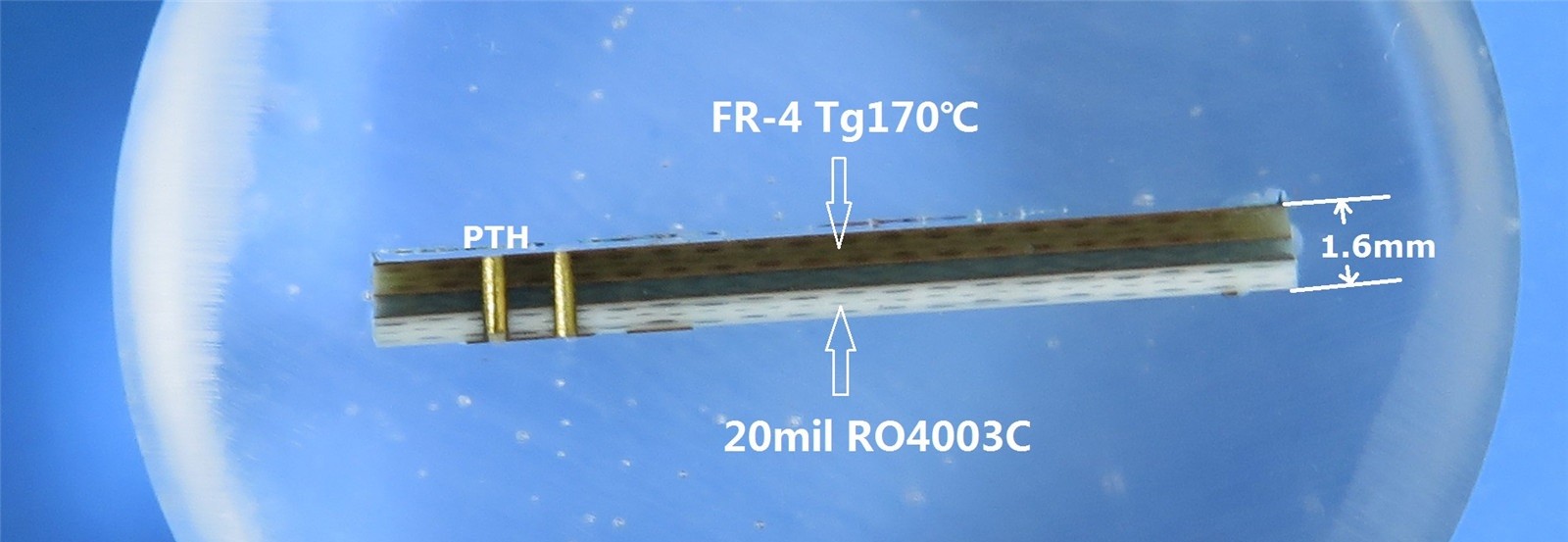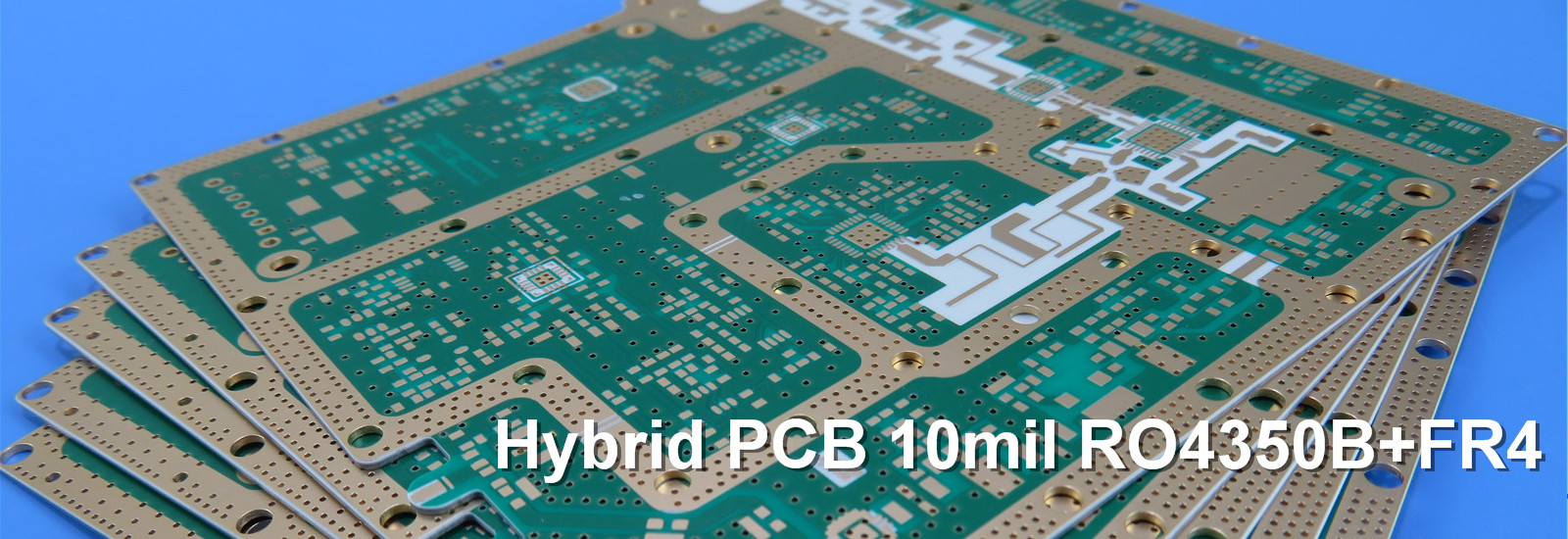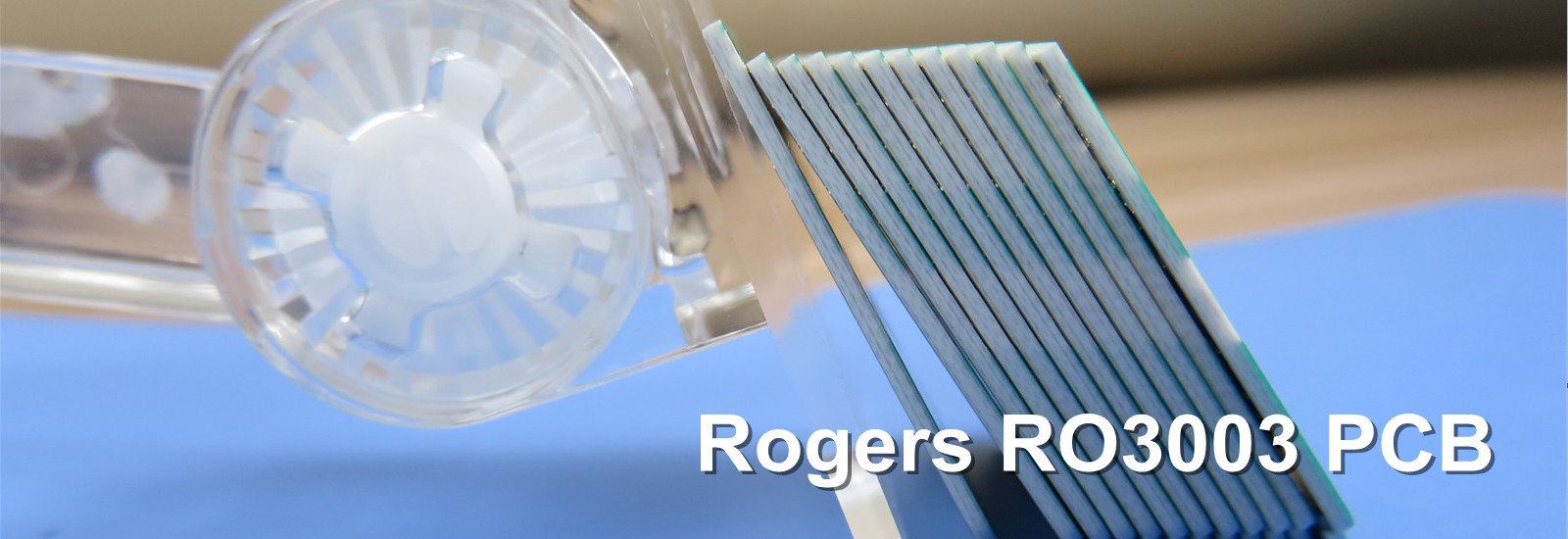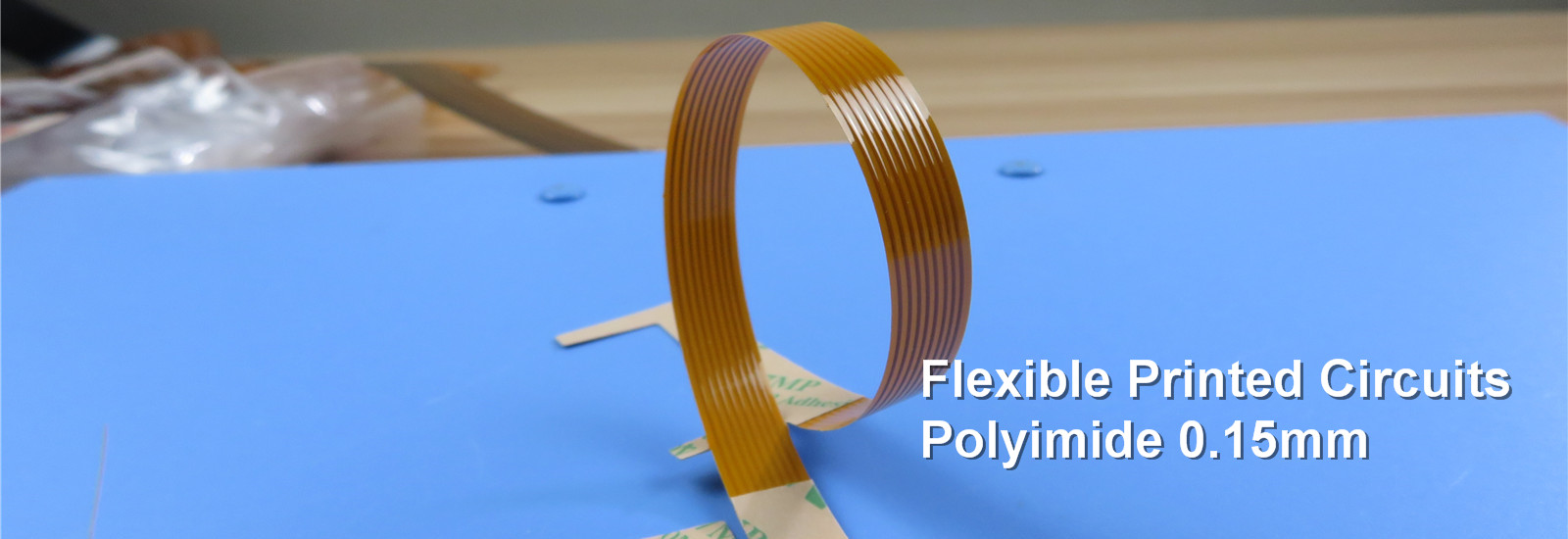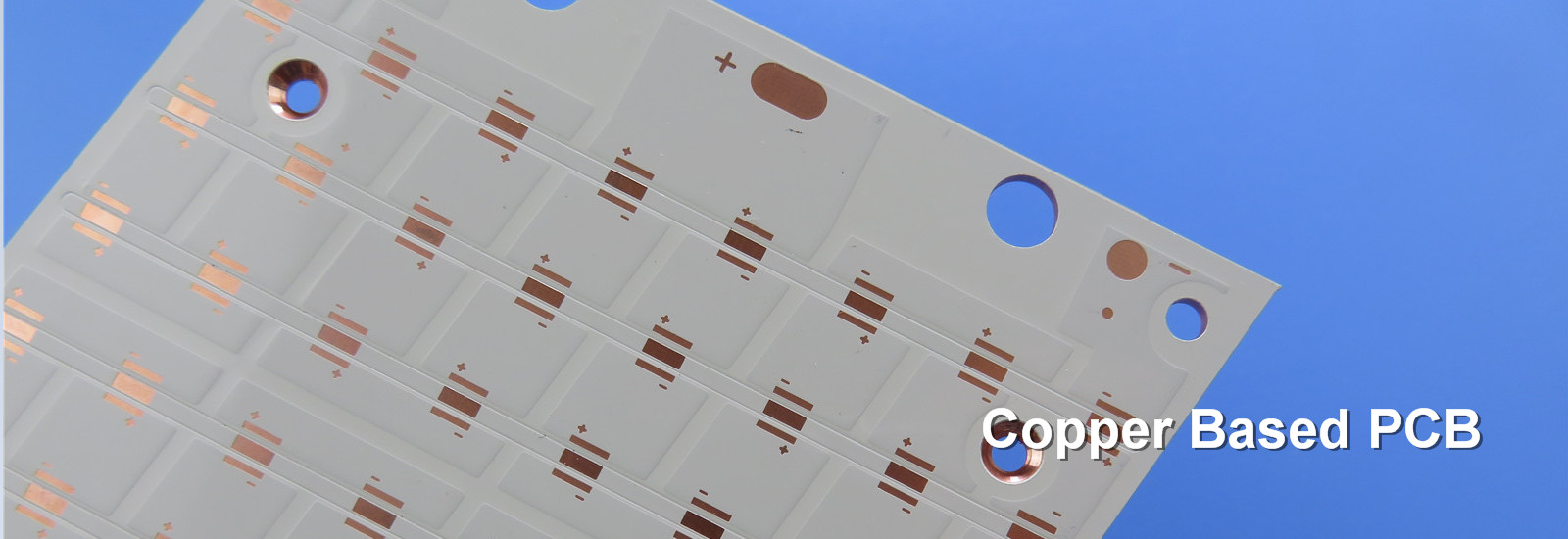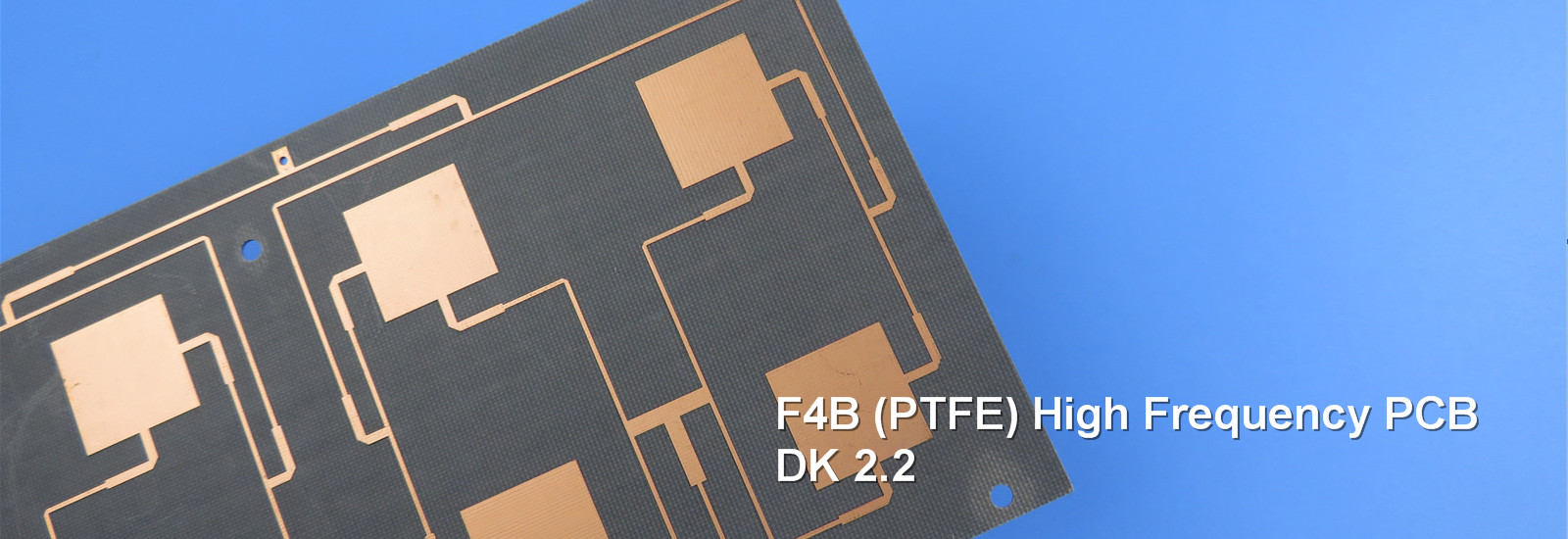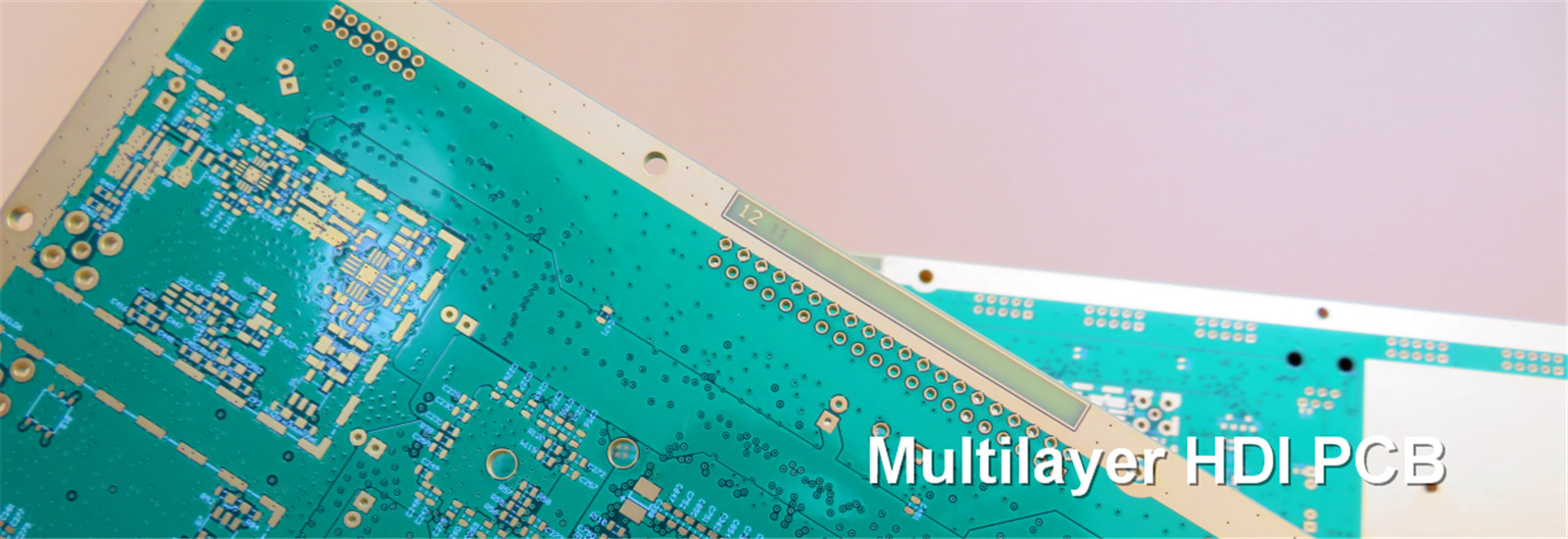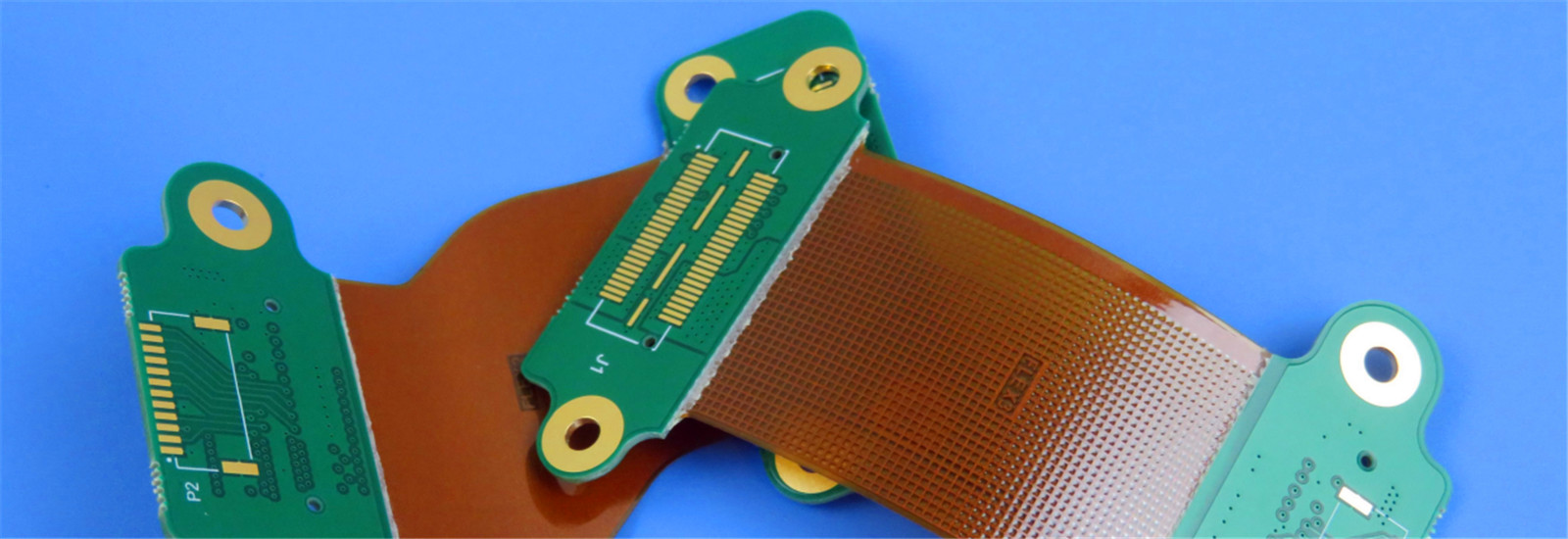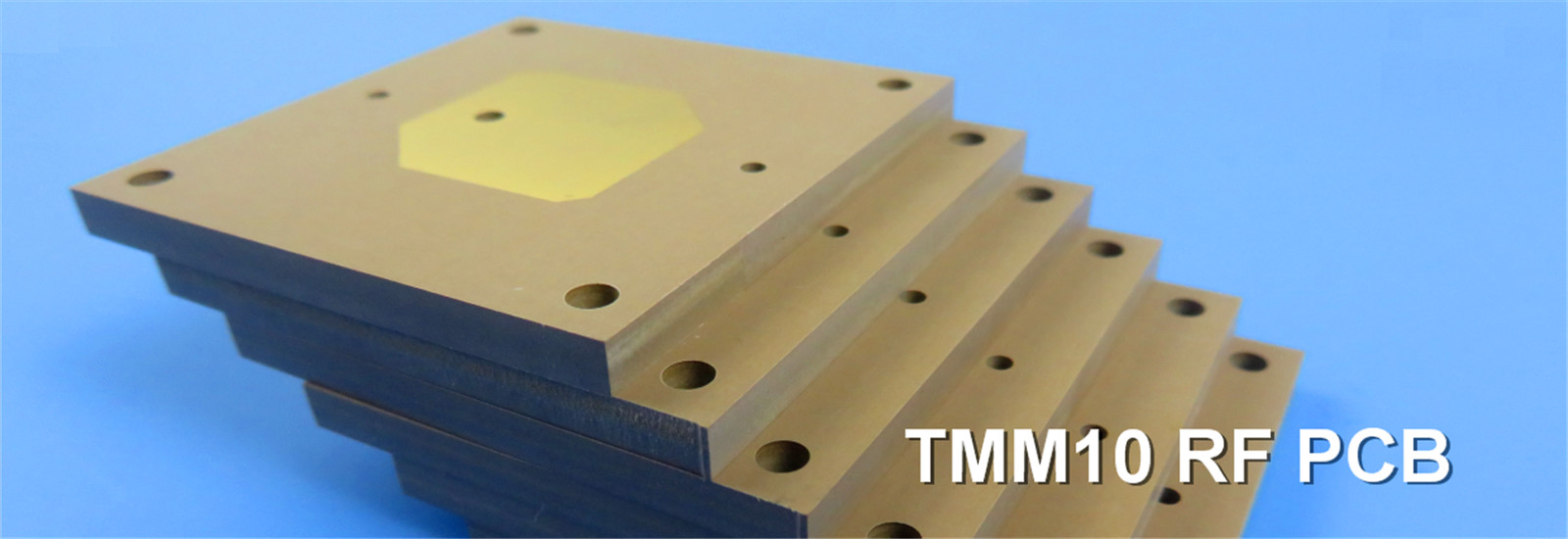RO4003C LoPro 라미네이트는 RF PCB 성능을 어떻게 향상시키는가
2025-12-03
라디오 주파수 (RF) 및 고속 디지털 회로의 성능은 기판 재료와 인쇄 회로 보드의 구조와 밀접하게 연결되어 있습니다. The presented board exemplifies how advanced hydrocarbon ceramic materials can be leveraged to achieve superior signal integrity and thermal performance while maintaining compatibility with standard PCB processing techniques.
1소개
통신 및 컴퓨팅 시스템의 작동 주파수가 계속 증가함에 따라 PCB 기판의 전기적 특성은 시스템 성능의 지배적 인 요소가됩니다.전통적인 FR-4 재료는 마이크로파 주파수에서 과도한 손실과 불안정한 변압 변수를 나타냅니다.이 기술 분석은 로저스 코퍼레이션의 RO4003C 로프로 시리즈를 사용하는 특정 구현에 초점을 맞추고 있습니다.고주파 성능의 최적의 균형을 제공하기 위해 설계된 재료, 열 관리, 제조 가능성
2재료 선택: RO4003C 로프로 라미네이트
설계의 핵심은 탄화수소 세라믹 복합물인 RO4003C LoPro 라미네이트입니다. 그 선택은 몇 가지 주요 특성으로 정당화됩니다.
안정적 다이전트 상수: 10GHz에서 3.38 ± 0.05의 엄격한 관용은 전단 및 다양한 환경 조건에서 예측 가능한 임피던스 제어 기능을 보장합니다.
낮은 분산 요인: 0으로0027, 물질은 40 GHz 이상의 응용 프로그램에서 신호 강도 및 무결성을 유지하는 데 중요한 다이 일렉트릭 손실을 최소화합니다.
증강된 열성능: 라미네이트는 0.64 W/m/K의 높은 열전도와 280°C를 초과하는 유리 전환 온도 (Tg) 를 가지고 있습니다.납 없는 조립과 고전력 운영 환경에서 신뢰성을 보장합니다..
낮은 프로필 구리: "로프로"라는 명칭은 반으로 처리 된 엽기를 사용하여 선도자의 표면을 부드럽게 만듭니다. 이것은 선도자의 손실과 분산을 줄여줍니다.표준 전자기 접착 된 구리 필름에 비해 삽입 손실을 직접 개선합니다..
RO4003C 재료 시스템의 중요한 장점은 표준 FR-4 다층 라미네이션 및 처리 절차와 호환성입니다.사전 처리를 통해 비용이 많이 드는 필요성을 제거하고 따라서 전체 제조 비용과 복잡성을 줄입니다..
3PCB 제조 및 스택업
보드는 2층의 딱딱한 구조로 다음과 같은 세부적인 스택업입니다.
1층: 35μm (1온스) 로 롤드 된 구리 포일.
다이렉트릭: 로저스 RO4003C 로프로 코어, 0.526mm (20.7m) 두께
2층: 35μm (1온스) 로 롤드 된 구리 포일.
완성된 보드의 두께는 0.65mm이며, 콤팩트 조립에 적합한 얇은 프로필 구조를 나타냅니다. 구조 세부 사항은 높은 생산성과 성능에 최적화된 디자인을 반영합니다.
중요한 차원: 최소 5/5 밀리미터의 흔적/공간과 최소 0.3mm의 구멍 크기는 중간 수준의 라우팅 밀도를 지원하면서 쉽게 달성 할 수있는 설계 규칙 세트를 보여줍니다.
표면 마감: 은 하부판 은하판 (hard gold) 은 RF 디자인에 대한 지표이다.이 가공 은 고주파 전류 에 대한 탁월 한 표면 전도성 을 제공한다, 커넥터의 낮은 접촉 저항, 우수한 환경 견고성.
구조를 통해: 보드는 20μm의 접착 두께로 39개의 구멍 뚫린 비아스를 사용하며, 간층 연결에 대한 높은 신뢰성을 보장합니다. 블라인드 비아스의 부재는 제조 프로세스를 단순화합니다.
4품질 및 표준
PCB 레이아웃 데이터는 Gerber RS-274-X 형식으로 제공되었으며 제조업체에 정확하고 명확한 데이터 전송을 보장합니다. 보드는 IPC-A-600 클래스 2 표준에 따라 제조 및 테스트되었습니다.장수 및 성능이 필요한 상용 및 산업용 전자제품의 전형적인 기준입니다..
품질 보장: 제조 후 100% 전기 테스트를 수행하여 모든 연결의 무결성 및 쇼트 또는 개방의 부재를 확인했습니다.
5응용 프로그램 프로파일
재료 특성과 구조 세부 사항의 조합으로 PCB는 다음과 같은 다양한 고성능 응용 프로그램에 적합합니다.
낮은 수동 인터모들레이션 (PIM) 이 중요한 셀룰러 기지국 안테나와 전력 증폭기.
위성 수신 시스템 내의 소음 저하 차단 다운 변환기 (LNB)
초고속 디지털 인프라에서 중요한 신호 경로, 예를 들어 서버 백플라인 및 네트워크 라우터.
고주파 RF 식별 (RFID) 태그.
6결론
분석된 PCB는 로저스 RO4003C 로프로 라미네이트의 효과적인 응용에 대한 실제 사례 연구로 사용됩니다. 디자인은 물질의 안정적인 전기적 특성과 낮은 손실 프로필,그리고 현대 고주파 회로의 요구 사항을 충족하기 위해 우수한 열 특성을또한, 제조 사양은 이국적인 또는 너무 비싼 제조 과정에 의존하지 않고도 그러한 높은 성능을 달성 할 수 있음을 보여줍니다.
더 보기
TLX-8 PCB가 고주파 응용 분야에 적합한 선택일까요?
2025-12-01
RF 및 마이크로파 설계의 까다로운 세계에서 인쇄 회로 기판(PCB)은 단순한 상호 연결 플랫폼 그 이상입니다. 시스템 성능의 필수적인 구성 요소입니다. 재료 선택, 스택업 및 제조 공차는 신호 무결성, 열 관리 및 장기적인 신뢰성에 직접적인 영향을 미칩니다.
오늘날, 우리는 재료 과학과 정밀 제조가 어떻게 융합되어 항공우주, 국방 및 통신 응용 분야의 엄격한 요구 사항을 충족하는지 설명하기 위해 특정 고성능 PCB 빌드를 해체하고 있습니다.
청사진: 고주파, 2층 보드
핵심 구성 세부 사항부터 시작해 보겠습니다.
기본 재료: Taconic TLX-8
레이어 수: 2 레이어
보드 치수: 25mm x 71mm (±0.15mm)
중요한 제조 공차:
표면 마감: 침지 금(ENIG)
품질 표준: IPC-Class-2
테스트: 100% 전기 테스트
이것은 표준 FR-4 보드가 아닙니다. PTFE 유리 섬유 복합재인 TLX-8의 선택은 전기적 성능이 협상 불가능한 응용 분야임을 즉시 나타냅니다.
TLX-8을 선택하는 이유? 전략적 구성 요소로서의 기판
TLX-8은 뛰어난 전기적 특성과 놀라운 기계적 견고성을 결합하여 선택된 최고의 고용량 안테나 재료입니다. 이 제품의 가치 제안은 혹독한 작동 환경에서 다재다능함에 있습니다.
크리프 및 진동 저항: 로켓 발사 시와 같이 극심한 힘을 경험하는 하우징에 볼트로 고정된 구조에 중요합니다.
고온 성능: 분해 온도(Td)가 535°C를 초과하므로 엔진 모듈 또는 기타 고열 시나리오에서 노출을 견딜 수 있습니다.
방사선 저항 및 낮은 가스 방출: NASA에서 인정한 우주 탑재 전자 장치에 필수적인 특성입니다.
치수 안정성: 베이킹 후 0.06mm/m 만큼 낮으므로 열 응력에서도 일관된 등록 및 임피던스 제어가 보장됩니다.
전기적 및 기계적 장점 해독
TLX-8의 데이터시트 속성은 RF 엔지니어에게 설득력 있는 이야기를 들려줍니다.
낮고 안정적인 유전율(Dk): 10GHz에서 2.55 ± 0.04. 이 엄격한 공차는 보드 전체 및 생산 배치 전체에서 예측 가능한 전파 속도와 일관된 임피던스 매칭에 매우 중요합니다.
초저 손실 계수(Df): 10GHz에서 0.0018. 이는 신호 손실을 최소화하여 고주파 및 저잡음 응용 분야에 이상적입니다.
우수한 수동 상호 변조(PIM) 성능: 일반적으로 -160dBc미만으로 측정되며, 스퓨리어스 신호가 네트워크 용량을 마비시킬 수 있는 최신 셀룰러 인프라 및 안테나 시스템에 중요한 성능 지표입니다.
뛰어난 열 및 화학적 특성:
스택업 및 제조 선택 분석
단순한 2층 스택업은 구성 요소 수가 적은 이 설계에 우아하고 효과적입니다.
구리(35µm) | TLX-8 코어(0.787mm) | 구리(35µm)
주요 제조 참고 사항:
솔더 마스크 또는 하단 실크스크린 없음: 이는 라미네이트 자체가 전송 매체를 형성하고 추가 재료가 전자기장에 영향을 미치고 손실을 유발할 수 있는 RF 보드에서 일반적입니다.
침지 금(ENIG) 표면 마감: 미세 피치 구성 요소에 이상적이고 필요한 경우 안정적인 와이어 본딩을 위한 우수한 산화 저항성을 갖춘 평평하고 납땜 가능한 표면을 제공합니다.
11개 구성 요소 보드에 27개의 비아: 이는 접지, 차폐 및 열 관리가 가장 중요한 설계임을 나타냅니다. 견고한 20µm 비아 도금 은 신뢰성을 보장합니다.
일반적인 응용 분야: 이 기술이 뛰어난 곳
재료와 제조의 이 특정 조합은 다음의 중요한 기능에 맞게 조정되었습니다.
레이더 시스템 (자동차, 항공우주 및 국방용)
5G/6G 모바일 통신 인프라
마이크로파 테스트 장비 및 전송 장치
중요한 RF 구성 요소: 커플러, 전력 분배기/결합기, 저잡음 증폭기 및 안테나.
결론: 정밀 엔지니어링의 증거
Taconic TLX-8을 선택하고 엄격한 제조 공차를 준수함으로써 이 구조는 표준 재료로는 달성할 수 없는 고주파 성능, 뛰어난 신뢰성 및 환경 탄력성의 조화를 이룹니다. 이는 중요한 원칙을 강조합니다. 즉, 첨단 전자 제품에서 기반, 즉 PCB 자체가 시스템 성공의 적극적이고 결정적인 요소입니다.
더 보기
AI 수요가 업스트림 연쇄 반응을 일으키고, CCL 산업은 "물량과 가격 동반 상승"을 보입니다.
2025-11-25
AI 컴퓨팅 파워 혁명이 고성능 인쇄 회로 기판(PCB)에 대한 수요 급증을 유발하여, 상류 핵심 기본 재료인 구리 클래드 라미네이트(CCL)에 대한 구조적 성장 기회를 창출하고 있습니다. 일부 고급 카테고리는 뜨거운 상품이 되었습니다. 국내 CCL 공장 관계자는 "올해 상반기에 수요가 회복되었지만, 수요 부족 여부는 제품에 따라 다릅니다. 일부 제품에 대한 수요는 매우 강하지만, 다른 제품은 꾸준한 성장을 경험하고 있습니다."라고 밝혔습니다. 여러 인터뷰를 통해 CLS 기자는 최근 많은 CCL 회사들이 올해 여러 차례 제품 가격을 인상했으며, 동적 조정이 여전히 진행 중임을 알게 되었습니다. 비용 압박과 수요 배당은 가격 인상의 주요 동인입니다. 고주파 및 고속, 고열 전도성 CCL과 같은 고성능 제품의 미래 성장 잠재력에 대해 낙관적인 국내 제조업체들은 관련 생산 능력 확충도 가속화하고 있습니다.
CCL이 PCB 비용 구조의 주요 부분을 차지하며, CCL의 주요 원자재인 구리 포일이 비용의 30% 이상을 차지한다는 사실이 알려져 있습니다. 구리 가격 상승은 CCL 생산 비용에 직접적인 영향을 미칩니다. 국제 구리 가격은 올해 지속적으로 상승하여, 10월 말 LME 구리가 톤당 11,200달러의 최고치를 기록했습니다. 높은 구리 가격의 주요 이유에 대해, Zhuochuang Information의 분석가 Tang Zhihao는 CLS 기자와의 인터뷰에서 AI 컴퓨팅 센터, 칩용 구리 포일, 그리드 업그레이드가 구리 소비를 촉진하고 있다고 언급했습니다. 중국의 신에너지 및 전력 부문은 높은 번영을 유지하며, 부동산 침체로 인한 영향을 상쇄하는 반면, 낮은 재고는 가격 탄력성을 증폭시킵니다. "앞으로, 광산 등급 하락과 심층 채굴은 지속적으로 상승하는 지속적인 CAPEX로 이어집니다. 2025-2030년 광산 생산의 연평균 성장률은 약 1.5%에 불과할 것으로 추정되며, 이는 수요 성장률보다 훨씬 낮습니다. 공급 부족 기대는 구리 가격에 강력한 지지력을 제공할 것입니다."라고 Tang Zhihao는 믿고 있습니다. 단기적으로, 핵심 LME 구리 거래 범위는 톤당 10,000-11,000달러입니다. 중장기적으로, 광산 측 투자가 여전히 뒤쳐지고 친환경 수요가 기대를 초과하면, 평균 가격은 점차 톤당 10,750-11,200달러로 상승할 것으로 예상됩니다.
소비자 측면에서, 일부 구리 사용 기업들은 구리 가격 상승에 대처하기 위해 헤징 작업을 시행하고 있습니다. 다른 기업들은 더 직접적으로, 시트 재료 가격을 인상하여 비용 전가를 달성하고 있습니다. 올해 상반기에만, "구리 가격 급등"으로 인해, 주요 제조업체인 Kingboard Laminates (01888.HK)는 3월과 5월에 가격 인상 공지를 발표했으며, 이는 업계의 다른 제조업체들이 따르도록 유발했습니다.
가격 인상은 비용뿐만 아니라 수요 측면의 구조적 성장도 CCL 제품 가격 상승에 기여합니다. "PCB는 다운스트림 수요에 따라 지속적으로 업데이트되는 성숙한 제조 산업입니다. 시장 변화가 빠르고, 수요가 빠르며, 재료 공급업체로서 우리도 그에 따라 변화해야 합니다."라고 한 업계 관계자는 CLS에 말하며, "AI 컴퓨팅 파워, 로봇 공학, 드론, 신에너지 차량의 전자 제어 시스템 모두 CCL과 회로 기판을 필요로 하며, 사용량이 비교적 많습니다."라고 덧붙였습니다.
CLS 기자는 최근 상장된 CCL 회사에 투자자로 가장하여 전화를 걸었습니다. Nanya New Material (688519.SH)의 증권부 직원은 현재 가동률이 90% 이상이라고 밝혔습니다. 가격은 이미 상승하고 있으며, 인상 시기에 대해 "10월에 인상이 있었다"고 밝혔습니다. 또한, 올해 상반기에도 가격 인상이 있었습니다. Huazheng New Material (603186.SH)의 직원은 현재 가동률이 높으며, 상반기 및 작년에 비해 증가했다고 말했습니다. 가격 인상에 대해, 그들은 "우리는 해당 조정을 하고 있습니다. 10월에 조정을 시작했으며, 제품 및 고객에 따라 동적 조정을 하고 있습니다."라고 말했습니다. 높은 구리 가격으로 인해 제품 가격이 조정될지 여부에 대해, 직원은 원자재 가격 인상의 정도와 지속 가능성을 종합적으로 고려해야 한다고 밝혔습니다. Jin'an Guji (002636.SZ)의 직원은 회사의 가격 책정은 시장을 따르며, 가격과 수요는 서로 보완한다고 밝혔습니다. 제품 가격은 시장 수요가 강할 때만 상승할 수 있습니다.
또한, 일부 업계 제조업체들은 다양한 CCL 제품에 대해 여전히 일괄적으로 가격을 조정하고 있다고 밝혔습니다. 국내 CCL 공장 관계자는 CLS 기자에게 전반적인 시장 수요가 증가하고 있다고 말했습니다. 회사의 판매량은 2023년과 2024년에 두 자릿수 연간 성장률을 유지했습니다. 판매량이 증가했지만, 수익성은 좋지 않았고, 비GAAP 순이익은 여전히 적자 상태였습니다. 이는 이전의 낮은 가격 때문입니다. 국내 경쟁이 치열하고, 다운스트림 업체들은 자체적인 비용 요구 사항을 가지고 있어, 상류 재료가 너무 비쌀 수 없으며, CCL 가격이 매우 견고해지는 것을 막고 있습니다. 이 관계자는 CCL 제품 가격이 2022년에 하락하기 시작하여 작년까지 지속되었음을 인정했습니다. 현재 회복되고 있지만, 2021년에 보였던 수준에는 훨씬 못 미칩니다.
그러나 시장 상황의 추가 개선과 이전 가격 인상의 이점은 제조업체의 실적을 크게 향상시켰습니다. 올해 1분기부터 3분기까지, Shengyi Technology (600183.SH), Jin'an Guji (002636.SZ), Ultrasonic Electronic (000823.SZ)과 같은 업계 회사들은 매출과 순이익 모두에서 성장을 달성했으며, 순이익은 전년 대비 20%에서 78%까지 증가했습니다. 실적 변화에 대해, Jin'an Guji는 3분기 보고서에서 이는 주로 주력 제품의 매출 총이익 증가 때문이라고 지적했습니다.
AI 서버와 같은 응용 시나리오에서 고성능 CCL에 대한 수요가 증가함에 따라, 국내 제조업체들은 M6 등급 이상의 제품에 대한 기술 레이아웃도 가속화하고 있습니다. 예를 들어, Shengyi Technology의 초저손실 제품은 이미 대량 공급되고 있으며, Chaoying Electronic (603175.SH)은 인터랙티브 플랫폼에서 M9 CCL 기술에 대해 여러 고객과 긴밀히 협력하고 있다고 밝혔습니다. Nanya New Material의 Bao Xinyang 총괄 매니저는 최근 실적 발표회에서 고속 재료 분야에서 회사가 M10 등급 CCL 제품에 대한 R&D 레이아웃을 적극적으로 시작했다고 밝혔습니다. 차세대 제품의 기술적 초점은 신호 전송 품질을 더욱 향상시키기 위해 더 낮은 유전 손실을 달성하고, 패키징 상호 연결 신뢰성을 개선하기 위해 낮은 열팽창 계수(CTE)를 달성하며, 증가하는 방열 요구 사항을 충족하기 위해 더 높은 내열성을 갖는 것입니다. M10 등급 CCL 제품의 진행 상황에 대해, 회사의 증권부 직원은 "실험실 제품은 이미 출시되었습니다."라고 말했습니다.
산업 연구는 AI CCL이 새로운 라운드의 산업 성장을 이끄는 엔진이 되고 있다고 믿고 있습니다. 그들의 추정에 따르면, AI CCL 시장(AI 서버, 스위치, 광학 모듈용)은 2025년에 22억 달러에 도달하여 전년 대비 100% 증가할 것입니다. 2026년에는 ASIC 물량 출하와 NVIDIA의 신제품이 CCL을 M9으로 업그레이드함에 따라, AI CCL 시장은 34억 달러에 도달하여 전년 대비 60% 증가할 것으로 추정됩니다. 2028년까지 58억 달러에 도달할 것으로 예상됩니다. 2024년부터 2028년까지 AI CCL의 연평균 성장률(CAGR)은 52%로 예상됩니다.
---------------------------------
출처: CLS
면책 조항: 우리는 독창성을 존중하고 공유에 중점을 둡니다. 텍스트 및 이미지의 저작권은 원저작자에게 있습니다. 재인쇄의 목적은 더 많은 정보를 공유하는 것이며, 이 계정의 입장을 대변하지 않으며, 귀하의 권리가 침해된 경우, 즉시 연락해 주시면 최대한 빨리 삭제하겠습니다. 감사합니다.
더 보기
QFII, AI 물결에 올라 PCB 섹터에 대규모 투자
2025-11-18
인공지능(AI) 파동에 의해 강력하게 추진되면서, 인쇄 회로 기판(PCB) 산업은 전례 없는 발전 기회를 맞이하고 있습니다. 공업정보화부는 최근 "인쇄 회로 기판 산업 표준 조건 및 발표 관리 조치(의견 수렴 초안)"에 대한 대중의 의견을 수렴했습니다. 이는 노후 생산 설비를 단계적으로 폐지하고 기술 혁신을 장려함으로써 산업의 변혁, 업그레이드, 그리고 하이엔드, 친환경, 지능형 개발로의 전환을 목표로 하며, 이 고성장 부문에 또 다른 정책적 순풍을 더하고 있습니다.
AI 산업의 활발한 발전은 하이엔드 PCB 시장의 상당한 성장으로 직접적으로 이어지고 있습니다. 권위 있는 기관 Prismark의 데이터에 따르면, 2024년에는 AI 서버 및 고속 네트워크의 강력한 수요에 힘입어, 고층 기판(18층 이상) 및 HDI 기판의 생산 가치가 각각 전년 대비 40.3% 및 18.8%로 크게 증가하여 다른 PCB 제품 부문에서 성장을 주도했습니다. Prismark는 2023년부터 2028년까지 AI 서버 관련 HDI의 연평균 성장률이 16.3%에 달하여 AI 서버 PCB 시장에서 가장 빠르게 성장하는 엔진이 될 것이며, 산업에 광대한 잠재력을 열어줄 것으로 예측합니다.
시장의 열기는 상장 기업의 실적 보고서에 충분히 반영되고 있습니다. Databao의 통계에 따르면, PCB 산업의 44개 A주 상장 기업은 올해 첫 3분기에 총 2,161억 9,100만 위안의 영업 수익을 달성하여 전년 대비 25.36% 증가했습니다. 주주 귀속 순이익은 208억 5,900만 위안으로, 전년 대비 62.15% 급증했습니다. 이 중 75% 이상의 기업이 주주 귀속 순이익에서 전년 대비 성장을 보였으며, 4개 기업이 적자에서 흑자로 전환하여 산업 전체의 고성장 및 고수익의 번영된 모습을 보여주고 있습니다.
업계 선두 주자인 Shengyi Electronics는 특히 눈부신 성과를 거두어, 첫 3분기 영업 수익이 전년 대비 114.79% 급증했고 주주 귀속 순이익은 497.61% 폭증했습니다. 회사는 투자자 소통에서 지능형 컴퓨팅 센터를 위한 고층, 고밀도 상호 연결 회로 기판 프로젝트의 1단계가 시험 생산을 시작했으며, 2단계는 이미 사전 계획 중이라고 밝혀 시장 전망에 대한 강한 자신감을 드러냈습니다. 흑자로 전환한 또 다른 회사인 Xingsen Technology는 첫 3분기 매출이 23% 이상 성장했습니다. CSP 패키징 기판 생산 능력은 이미 풀 가동 상태이며, 새로 추가된 생산 능력이 빠르게 증가하고 있으며, FCBGA 패키징 기판 프로젝트는 소량 생산 단계에 있으며, 사업 확장이 꾸준히 진행되고 있습니다.
산업의 강력한 전망은 또한 국제 자본의 관심을 끌었습니다. 데이터에 따르면, 올해 3분기 말까지 총 13개의 PCB 컨셉 주식이 QFII(적격 외국 기관 투자자)에 의해 대량 보유되었으며, 총 보유 시장 가치는 166억 3,500만 위안에 달했습니다. 이 중 업계 선두 주자인 Shengyi Technology는 QFII의 높은 보유 비율이 12.32%에 달했으며, 보유 시장 가치는 159억 3,600만 위안으로, 외국 자본의 장기적 가치에 대한 확고한 자신감을 보여주었습니다. Jingwang Electronics 및 Junya Technology와 같은 회사도 QFII 투자를 유치했으며, UBS AG와 같은 유명 외국 기관이 상위 10대 주주에 이름을 올렸습니다.
정책 지침에서 시장 수요, 실적 폭발에서 자본 선호에 이르기까지, PCB 산업은 AI 트렌드의 최전선에 서 있습니다. 전자 산업 체인에서 없어서는 안 될 핵심적인 위치를 활용하여, AI 파동과 시장 확장에 의해 공동으로 추진되는 가치 재평가를 겪고 있습니다. 자본의 호의를 받으며, 미래 성장 잠재력은 지속적인 관심을 받을 가치가 있습니다.
---------------------------------------
출처: 글로벌 타임스
면책 조항: 우리는 독창성을 존중하고 공유를 중요하게 생각합니다. 텍스트 및 이미지의 저작권은 원저작자에게 있습니다. 재인쇄의 목적은 더 많은 정보를 공유하기 위한 것이며, 본 간행물의 입장을 대변하지 않습니다. 귀하의 권리와 이익이 침해된 경우, 즉시 연락해 주시면 최대한 빨리 삭제하겠습니다. 감사합니다.
더 보기
AI 주도 PCB 수요 급증, 산업, 새로운 확장 정점 진입
2025-11-03
AI 발전의 물결에 힘입어 전자 기기의 '신경 중추'로 알려진 PCB(인쇄회로기판)는 시장 수요가 크게 증가하고 있으며, 업계는 새로운 정점 확장기에 진입하고 있습니다.
선도기업, 적극적으로 역량 확대Pengding Holdings는 통신 전자 제품, 가전 제품, 고성능 컴퓨팅 제품, EV 및 AI 서버에 널리 사용되는 다양한 PCB 제품 라인을 보유하고 있으며 10월 31일 기관 조사에서 2025년 이후 인공 지능과 같은 신흥 산업의 급속한 발전으로 인해 PCB 성능 및 정밀도에 대한 시장 요구 사항이 증가하여 광범위한 시장 기회를 가져왔다고 밝혔습니다. 이러한 배경에서 회사는 시장 확대를 강화하고 신제품 인증 및 생산을 꾸준히 추진하는 동시에 다양한 사업 부문의 심층적 개발을 꾸준히 진행하고 있습니다. 2025년 첫 3분기에 회사는 전년 대비 14.34% 증가한 268억 5500만 위안의 매출을 달성했으며, 전년 대비 21.23% 증가한 24억 700만 위안의 주주 순이익을 달성했습니다.
용량 배치와 관련하여 Pengding Holdings는 태국 화이안 및 기타 지역에서 새로운 생산 능력 구축을 적극적으로 추진하고 있다고 밝혔습니다. 보고 기간 동안 회사의 자본 지출은 49억 7,200만 위안에 달해 지난해 같은 기간에 비해 거의 30억 위안 증가했습니다. AI 컴퓨팅 성능이 폭발적으로 증가하면서 회사는 새로운 정점 확장 기간에 돌입했습니다. 향후 몇 년 동안 새로운 용량이 점차 출시됨에 따라 컴퓨팅 파워 분야는 회사 발전의 중요한 기둥이 될 것입니다.
마찬가지로 지난 10월부터 PCB 소재 업체인 디푸테크놀로지(Defu Technology)와 필립록(Philip Rock)이 자금 조달과 확장 계획을 공개했다. 예를 들어 Defu Technology는 지원 장비 시설과 함께 캐리어 구리박, 매립 저항 구리박, 고주파 고속 구리박과 같은 특수 구리박에 대한 R&D 및 생산 작업장을 구축하기 위해 추가로 10억 위안을 투자할 계획입니다. 이전에 Han's CNC는 모금된 자금 투자 프로젝트 중 일부에 대한 조정을 발표하여 "PCB 특수 장비 생산 확장 및 업그레이드 프로젝트"의 계획 용량을 연간 2,120개에서 3,780개로 늘렸습니다.
업계 전반의 확장 물결이 도래Shenghong Technology는 최근 글로벌 PCB 산업에서의 선두 위치와 AI 컴퓨팅 성능 및 AI 서버와 같은 분야에서의 이점을 강화하기 위해 고급 HDI 및 다층 카운트 보드와 같은 고급 제품의 생산 능력을 지속적으로 확장하고 있다고 밝혔습니다. 여기에는 Huizhou HDI 장비 업데이트 및 Plant 4 프로젝트는 물론 태국 및 베트남 공장의 HDI 및 다층 수 확장 프로젝트가 포함되며 확장 속도는 업계를 선도합니다. 현재 관련된 모든 확장 프로젝트는 계획대로 진행되고 있으며, 회사는 전략 계획 및 비즈니스 요구에 따라 용량 배치를 조정할 예정입니다.
Dongshan Precision은 자사의 생산 능력 확장이 고속 컴퓨팅 서버 및 인공 지능과 같은 신흥 시나리오에서 고급 PCB에 대한 중장기 고객 수요를 충족하기 위해 고급 PCB 생산량을 늘리는 동시에 회사의 운영 규모를 더욱 확장하고 전반적인 경제적 이익을 향상시키는 것을 목표로 한다고 밝혔습니다.
Guanghe Technology는 "현재 회사의 다양한 기술 혁신 및 확장 계획은 주로 회사의 비즈니스 개발 요구를 지원할 수 있는 고급 데이터 통신 PCB 제품을 대상으로 하고 있습니다."라고 말했습니다.
Jinlu Electronics는 또한 Qingyuan 생산 기지의 PCB 확장 프로젝트가 3단계에 걸쳐 건설되고 있으며 건설과 생산이 동시에 진행되고 있다고 언급했습니다. 회사는 현재 아직 생산을 시작하지 않은 프로젝트의 첫 번째 단계를 가속화하고 있습니다.
기관들은 급속한 산업 성장을 예측합니다.CITIC증권은 AI 컴퓨팅 파워 인프라 구축이 가속화되면서 PCB 수요가 급증하고 있다고 밝혔다. 이러한 배경에서 다층수 보드, HDI 보드, IC 기판에 대한 계획된 출력 가치가 빠르게 증가하고 있습니다. 국내 제조업체들은 하이엔드 생산능력을 적극적으로 확대하고 있으며, 중국의 주요 PCB 기업들은 2025~2026년 동안 총 419억 위안에 달하는 프로젝트 투자를 형성할 것으로 예상된다.
CSC Financial은 AI PCB가 PCB 장비의 업데이트 및 업그레이드에 대한 수요를 지속적으로 주도할 것으로 예상된다고 언급했습니다. PCB 산업은 상승 사이클 복귀, 제품 프리미엄화, 동남아 공장 건설 등이 특징이다. 출력 증가와 프로세스 변경으로 인해 PCB 장비의 업데이트 및 업그레이드에 대한 수요가 지속적으로 증가할 것으로 예상됩니다.
중상공업연구원(Zhongshang Industry Research Institute)이 발표한 '2025~2030년 중국 인쇄회로기판(PCB) 산업 발전 동향 및 예측 보고서'에 따르면, AI 기술의 확산과 신에너지 차량의 강력한 시장 진입으로 AI 서버 및 자동차 전장과 관련된 PCB 수요가 크게 증가해 산업 성장의 중요한 원동력이 됐다. 세계 PCB 시장 규모는 2023년 783억4000만 달러로 전년 동기 대비 4.2% 감소했으며, 2024년에는 약 880억 달러 규모다. 2025년에는 968억 달러에 이를 것으로 예상된다.
동 보고서에 따르면 국내 PCB 시장 규모는 2023년 3,632억5,700만 위안으로 전년 대비 3.80% 감소한 것으로 나타났다. 2024년에는 약 4,121억1,000만 위안에 달했다. 2025년에는 중국 PCB 시장 규모가 4,333억2,100만 위안으로 회복될 것으로 예상된다.
산업 체인 전반에 걸쳐 향상된 성능PCB 산업의 시장 수요 증가는 이미 관련 기업의 실적을 향상시켰습니다. 최근 Shengyi Electronics, Han's CNC, Dingtai GaoKE를 포함하여 PCB 산업 체인에 있는 10개 이상의 상장 기업이 3분기 보고서에서 상당한 전년 대비 실적 성장을 공개했습니다.
----------------------------------
출처: 증권타임스면책 조항: 우리는 독창성을 존중하고 공유에도 중점을 둡니다. 글과 이미지의 저작권은 원저작자에게 있습니다. 재인쇄의 목적은 더 많은 정보를 공유하는 것입니다. 이는 우리의 입장을 대변하는 것이 아닙니다. 귀하의 권리가 침해된 경우, 즉시 당사에 연락해 주시기 바랍니다. 최대한 빨리 삭제하도록 하겠습니다. 감사합니다.
더 보기



